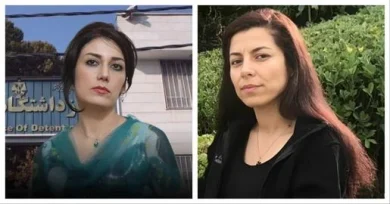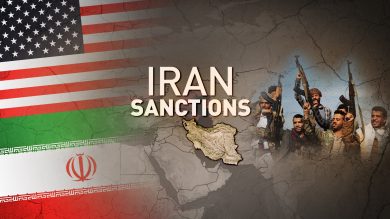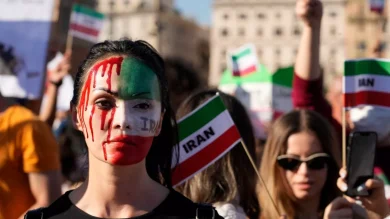From the iconic student uprisings of 1999 to the defiant chants of “Woman, Life, Freedom” echoing in 2022, Iran’s student movements have always been the beating heart of its struggle for democracy. For decades, young Iranians have stood at the frontlines of resistance against the regime’s brutal security forces — and no matter how hard the Islamic Revolutionary Guard Corps (IRGC) tries to crush them, they rise again.
Today’s youth are bolder, more connected, and more determined than ever before. In a country where 70% of the population is under 35, the regime’s worst nightmare is this new generation — one that refuses to accept the fear, silence, and repression their parents endured.
This is the story of Iranian students — past and present — who have turned classrooms into battlefields for freedom.
1. A Tradition of Dissent: The 1999 Uprising
It was July 1999 when Tehran University students took to the streets to protest the closure of the reformist newspaper Salam. The protests quickly became the largest student uprising since the 1979 revolution.
Why It Mattered:
• It was a challenge to the “supreme” power of the Supreme Leader.
• Students demanded an end to censorship, arbitrary arrests, and the regime’s monopoly on truth.
• The uprising exposed cracks within the system, with reformist politicians initially voicing support.
The regime’s response was swift and brutal. The IRGC’s Basij militia raided dormitories, beat students with batons, and disappeared dozens into secret prisons. The message was clear: dissent would be met with violence.
But even then, the seeds of a new Iran were planted.
2. The Green Movement: Youth vs. the 2009 Coup
A decade later, students were at the forefront of the Green Movement — the mass protests against the fraudulent re-election of Mahmoud Ahmadinejad in 2009.
What Happened:
• Millions took to the streets, chanting “Where is my vote?”
• Universities became hubs of debate and organizing, despite constant surveillance.
• Young people — often born after the revolution — demanded the same freedoms they saw online and in the world beyond Iran’s borders.
The regime responded with bullets and prison cells. Neda Agha-Soltan, a young woman shot in the street, became the face of a generation’s courage — and the regime’s cruelty.
3. Post-Green Movement: A Generation That Refused to Die
Though the Green Movement was crushed, the spirit of dissent never left Iran’s campuses. Throughout the 2010s, small but defiant student protests kept erupting.
Key themes:
• Opposition to gender segregation and forced hijab rules.
• Solidarity with workers, teachers, and ethnic minorities.
• Demands for an end to corruption and mismanagement that left millions in poverty.
In every protest, the same chant echoed: “Student, worker, teacher — unity, unity!”
It was a warning to the regime: repression cannot kill solidarity.
4. The 2022 Uprising: “Woman, Life, Freedom”
Then came Mahsa (Jina) Amini’s murder in September 2022. Her death ignited the largest uprising since 1979, and once again, students were at the center.
What made this movement different?
• Women and girls led the charge, removing their hijabs in classrooms and chanting in defiance.
• Ethnic and religious minorities joined forces, forging a unity that transcended past divides.
• Students occupied universities, turning them into islands of freedom.
The regime cracked down viciously, sending IRGC and Basij forces to campuses across Iran. Yet, the images of young women standing with unveiled hair and fists raised became a symbol of hope worldwide.
5. Why the Regime Fears Students
The IRGC’s obsession with controlling universities is not paranoia — it’s survival instinct.
Here’s why:
• Universities are Iran’s conscience. In a country where independent media is silenced, students keep debate alive.
• Youth refuse to inherit fear.
Many were born after the revolution, immune to the regime’s old myths.
• Students connect local and global. They bring international awareness to the regime’s crimes — in multiple languages, with memes and livestreams.
The IRGC knows that a movement that starts in a dorm room can end on the steps of the regime’s palaces.
6. The Regime’s Playbook: Violence, Surveillance, and Indoctrination
The regime’s tactics against student movements have remained consistent — and ruthless.
a) Violence
• Dormitory raids, beatings, and “disappearances.”
• Mass arrests during protests — often targeting student leaders.
• Use of sexual violence and torture in detention.
b) Surveillance
• Basij informants in classrooms.
• Cyber units tracking social media posts.
• Professors forced to spy on their own students.
c) Indoctrination
• Mandatory “ideological classes” glorifying the regime.
• Basij student groups that promote IRGC propaganda and suppress dissent.
These tactics aim to kill not just the movement, but the idea of freedom itself.
7. The Power of Women in Student Movements
The 2022 uprising showed what many in Iran already knew: women are the vanguard of change.
• Schoolgirls in uniform flipping off the Supreme Leader’s portrait.
• University women leading chants of “Death to the Dictator.”
• Mothers of slain students refusing to mourn in silence.
For the regime, women’s leadership is an existential threat. Because if women control their bodies, they will also control the narrative — and the future.
8. The Role of Technology: A Double-Edged Sword
Iran’s students have turned smartphones into weapons of truth. But the IRGC uses technology too — as a tool of fear.
For students:
• VPNs to bypass censorship.
• Livestreams to document protests.
• Encrypted messaging to stay one step ahead of the regime.
For the IRGC:
• Cyber units that hack and leak private conversations.
• Digital disinformation campaigns to discredit student leaders.
• Doxing and intimidation of activists’ families.
Yet every time the regime tries to block the internet, it only confirms one thing: they fear a generation that will not be silenced.
9. Diaspora Solidarity: Global Amplification
Iranian students abroad — from Berlin to Toronto — have become a lifeline for those inside.
• Organizing protests at universities worldwide.
• Hosting panels and exhibitions about repression in Iran.
• Helping document abuses for international legal cases.
This global network of student solidarity proves that the regime can control borders — but it cannot control memory or conscience.
10. Lessons from the Past, Hopes for the Future
Iran’s student movements have never had it easy. They’ve faced tanks in the streets, spies in their classes, and the constant threat of exile or death. Yet they remain.
Why?
• Because they know that change does not come from above — it grows in the cracks the regime can’t fill.
• Because every generation has added its voice to the chorus of “Azadi” — freedom.
• Because they have each other.
11. What the World Must Do
The global community has a responsibility to stand with these students — not just in words, but in action.
• Provide digital security tools and training to help them organize safely.
• Sanction regime officials and IRGC commanders who target students.
• Fund Iranian-led media and civil society projects that amplify student voices.
• Offer safe refuge for exiled activists and scholars fleeing regime violence.
Solidarity isn’t a hashtag. It’s a moral duty.
Conclusion: The Future Belongs to Iran’s Youth
Iran’s students have always been the regime’s greatest fear — and its greatest hope. They are the soul of a nation that refuses to be defined by prisons, mullahs, or military uniforms.
They know that freedom isn’t given. It’s taken — by those brave enough to demand it, even at the cost of their own lives.
Join Our Newsletter!
Stay informed with the latest updates, news, and ways to take action in the fight for justice and global security. Sign up now to get updates delivered straight to your inbox!





